History, Art and Culinary Delights: A 3 day Charleston Itinerary
Charleston, the cultural center of South Carolina, an American state on the southeast, attracts thousands of visitors in spring to see the blooming azaleas. This city is an “Instagram darling” amongst influencers thanks to its old world southern charm which it still retains via the huge mansions, stunning architecture and cobbled streets on which horse drawn carriages trot with tourists aboard. We spend 3 days in Charleston doing a lot of touristy things but regurgitating a “listicle”/”things to do” type Charleston itinerary is something that I am hesitant to do this time around.
This is in part because I did not want this post to be another rehashed version of “top things to do in Charleston” and also because there is much more to Charleston than what meets the eye. Hopefully, these recommendations on what to do in Charleston a little bit more in-depth and centered around history, art, architecture and food will encourage you to explore the city’s backstories and enrichen your travel experience.
Disclaimer: My blog posts may contain some affiliate links. Clicking on them may earn me a small commission at no extra cost to you for the product. Thank you!
Charleston itinerary: Exploring a colonial past
“A people without the knowledge of their past history, origin and culture is like a tree without roots”-Marcus Garvey
Since Charleston’s historic attractions and unique vintage feel are its biggest selling points, it is only fair that their tale of inception and roots also get a place at the talking table and not be glossed over. The history of Charleston is no way as pretty as its beautiful mansions or curated gardens and may be a difficult read for some of you.
However, I urge you to take a few minutes to discover what made Charleston the prosperous city that it is today and to have a greater appreciation for what you see on your visit, knowing that this wealth and abundance came at a tremendous human cost. Here are some places that can help you delve into the backstories that shaped the city and its fortunes, and continue to influence its societal fabric in present times.
a) The Old Slave Mart Museum
Charleston’s wealth rests on the foundation of slavery, that continued unabated right from the the beginning of the 18th century up until 1865 after the US Civil war (thankfully won by the North/Abolitionists) when the 13th amendment brought an end to this inhuman practice.
To say that Charleston was the epicenter of slave trade in USA would be an understatement; the city was the direct port of entry for 40-60% of the slaves brought into USA via the transatlantic slave trade and thrived under a economy based on slave labor for over 200 years.
In plain English, all the 19th century (and older) mansions that you see today, their intricate ironwork and the charming private home gardens tucked away behind them were built on the blood of slaves, either toiling away on the plantations, or working as house slaves.
Even after the abolition of international slave trade in 1808, Charleston continued the domestic trade of slaves and was the last to implement abolition after the civil war. Freedom gave way to segregation and systematic disenfranchisement which compounded the miseries of the free slaves, something that continues to affect the African American population even in present times.
Above: Corene by renowned Gullah artist Jonathan Green (Gibbes Museum of Art)
This history of slavery in Charleston starting from the international slave trade to emancipation is chronicled in detail in the Old Slave Mart museum which was once an indoor auction site for slaves (actually one of the 40 within 4 blocks of its current location in the French Quarters) when public auction was banned in the city.
The exhibits in this small, two storeyed museum render quite a punch to your gut as they lay out the untold stories of barbaric cruelty meted out by the slave owners, and traders on their “merchandise” (that included ripping families apart in auctions, sexual abuse of female slaves and selling off the offsprings borne of such abuse) who were completely dehumanized for profit.
These exhibits include newspaper clippings, public announcements of auctions, historic timelines pertaining to slave trade, artifacts such as iron collars, chains, handcuffs and other contraptions used to fetter and torture the slaves as well as flyers announcing rewards for catching escaped slaves.
Despite the pall of gloom and pain that it may cast on you, I urge you to spend some time here to have a better understanding of what it took to build the city of Charleston and its splendour that we are privileged enough to enjoy in present times. Please note that photography is not permitted inside the museum, so barring the ones in left and center panel of the photo below which are of the entrance, all others included in this section are from other spots in Charleston.
b) Magnolia Plantation and Gardens
World famous for gardens laden with magical blooms that come alive in spring, Magnolia plantation (founded by Thomas Drayton and his wife Anne in 1676 on the banks of the Ashley River) was essentially an antebellum slave plantation, its prosperity being the direct result of slave labor that went into producing the one commodity that was considered ultra precious at that time, i.e. RICE.
Plantation owners all over South Carolina literally struck gold with rice (thus was borne the famous “Carolina Gold” brand) and the requirement of cheap labor ushered in the slave trade where west Africans were captured from countries such as Ghana (also known as Gold coast or rice coast) to work relentlessly on the Lowcountry swamps in south Carolina to clean, dyke and tend to the paddy fields as well as plant, process and harvest the crop.
At Magnolia, the practice of slavery is readily acknowledged and talked in detail in the introductory video that is not to be missed (in a room right next to the ticket counter). There is also a 45 minute tour on the slave dwellings, named “Slavery to Freedom: The Magnolia Cabin Project Tour“, which requires separate tickets. Here, the tour guide takes you to the slave cabins and gives a detailed account on life on the plantation, the day to day duties of the slaves as well as their fate and road to freedom in the aftermath of the civil war.
Unfortunately for us, the tour had already started by the time we’d arrived and since the next one was at least three hours away, we decided to simply stroll through the gardens, spend time at the history room of the plantation house (free entry and an excellent resource on learning more about the plantation) and returned to the French quarters.
Coming back to the gardens, they are indeed a sight to behold with a medley of Spanish Moss, camellias and azaleas beckoning you from every corner. They are an amalgamation of classic English style landscaping as well as the naturalistic southern style and are a labor of love of John Grimke Drayton who was preparing himself for the ministry but inherited the plantation at the age of 22 due to the untimely death of his older brother.
This last of the Romantic-style gardens in USA is a true paradise for nature lovers and best enjoyed earlier in the day with lesser crowds. Spring (March-April) is the best time to visit to see all the flowers in bloom. The basic ticket contains entrance to the gardens, the peacock cafe (yes, there are peacocks roaming around freely in this enclosed section) and the history room in the plantation house (the house tour comes on a different ticket that we did not purchase).
Separate tickets are needed for all other parts of the plantation via different tours. This plantation is about a 30 min drive from Charleston proper; if you do not have a rental car you can look into this Magnolia Plantation tour and transportation option.
c) Nathaniel Russell House
The Charleston Preservation society has done a commendable job in restoring various historic mansions and needless to say, they belong to erstwhile wealthy plantation owners who also enjoyed immense profits via slave trading. The Nathaniel Russell house in the posh South of Broad neighborhood as well as the Aiken-Rhett House are two such homes that come to mind.
Again, this is one of those stops on your Charleston itinerary that you may or may not want to include depending on your interest and comfort level. Despite your reservations towards coughing up money to enter the home of an evil plantation owner, a tour of one of these private mansions turned museums is possibly your only way to get a glimpse of the lives of house slaves living in Charleston at that time.
Our curiosity drove us to Nathaniel Russell house where a free audio tour helped us navigate through the different floors of the house as well as the garden of this supremely wealthy plantation owner whose ornate rooms are a testimony to his wealth, which again was not very uncommon in 19th century Charleston bursting at its seams with riches procured from rice production.
In stark contrast, the slave quarters (rooms) were small with crudely whitewashed walls and devoid of any furniture, with only some small mementos/ belongings retrieved from their rooms that help speculate their private moments. Since it was illegal to teach slaves how to read and write, detailed records do not exist of their lives in the quarters and efforts are ongoing to piece together what life might have been for them in the confines of these homes. The audio tour also leads you to the kitchen and the laundry room where the slaves worked, and details their daily chores that helped guarantee a lavish lifestyle for their masters.
For those interested, here is some suggested reading on Charleston’s role in African American History (you can also buy books at the entrance of the old Slave Mart museum). I highly recommend the one by the Grimke sisters who were southern abolitionists (and, members of the Drayton family) and worked tirelessly for emancipation of slaves in their home state.
d) Walking tour of Charleston
There is no doubt that there are many things to do to keep you busy on your 3 days in Charleston, but if there is one thing that should be on your Charleston itinerary, I beg of you to let that be a walking tour of the city.
Mind you, there are several guided tours of the city, many of them being the popular carriage tours (drawn by horses) that I am not comfortable with. So my recommendation would be to go with a real walking tour to get a feel of the city and its nooks and crannies and who better to do it with than Michael Trouche, a 7th generation Charlestonian who will take you on a super fun and educational journey through his home.
For two solid hours, you get a living breathing dictionary filling you in on all kinds of Charleston trivia starting from how it was so named to why the pineapple is the symbol of southern hospitality to the origin and distinct dialect of the Gullah people (direct descendents from West African slaves) to why the name “French quarters” is totally phoney to why Charleston is also known as the “Holy City”.
Michael entertains and educates you with all the backstories of people, places and events that shaped Charleston as you walk with him from the French Quarters down to south of Broad to the Battery and back. His tour, featured on Condé Nast traveler, is called Charleston Footprints tour and you have to email him in advance for booking a spot (the fee is $20 in cash/person).
Other popular Charleston tours
3 days in Charleston: Art, Architecture, Parks and Gardens
If you are a sucker for arts and architecture, then Charleston is definitely the place to be because it is a visual onslaught of pristine mansions exemplifying the best of European classical architecture, single family homes with side porches in all shades of pastel and beautiful art galleries clamoring for your attention from every corner. If you are an arts, architecture and nature lover, do fit in these following attractions in your Charleston itinerary:
e) Gibbes museum of Art
This American art museum that opened in 1905 has an enviable collection of 18th and 19th century art, as well as those collections of regional artists from the south depicting the arts renaissance in Charleston, including that of famous Gullah artist Jonathan Green.
We were also treated to a jaw dropping watercolor collection by accomplished artist Ogden Pleissner named “Lying in wait” which depicted scenes from hunting and fishing all over USA (the hunting scenes do not depict any actual gore or animal trophies, they are more landscape focused with the hunters shown as secondary subjects waiting to shoot down fowl).
f) Art galleries
Charleston is the one city where art galleries are as much a sight to behold as the paintings they are home to. Most of these galleries appear like actual homes with the artwork being bathed in golden sunlight streaming in from tall French windows all around and winding staircases taking you to a second floor where the walls are adorned with more works of art as are the staged living rooms.
Meeting street, Broad street and King street are teeming with beautiful galleries showcasing artwork from both national as well as internationally renowned artists. I especially loved the Meyer Vogl gallery (met super friendly co-owner Marissa Vogl on the second floor who was busy completing one of her paintings) on Meeting street, LePrince fine art gallery on King Street and Gaye Sanders Fisher art gallery which is small gallery tucked away across from the old Slave Mart Museum and showcases the southern artist’s delicate, beautiful watercolor paintings depicting life in the American south.
g) Architecture
Charleston will delight you with its architectural wonders, be it the majestic mansions or single family homes in the French Quarters and South of Broad neighborhood or the equally towering houses lining the Battery.
As per this Culture Trip article, the city is home to more than 2800 historic buildings exemplifying 8 distinctly different architectural styles through the city’s progression from its colonial days to present. These styles, namely: “Colonial, Georgian, Federal, Classic Revival, Gothic Revival, Italianate, Victorian, and Art Deco” are what make Charleston so alluring in terms of architecture.
The Exchange Provost building on one end of East Bay Street showcases the colonial style of architecture while the French protestant Huguenot Church (which is the only “French” aspect of the French Quarters) exemplifies the Gothic style with its pointed spires. The water front homes along the Battery are a mix of Italian Renaissance revival and Art Deco styles and will kind of remind you of the art deco homes in Miami.
The single family homes (which appeared as gigantic mansions to this San Franciscan living in a small condo) with their slatted windows (much like those seen in the French quarters of New Orleans) and side porches are built that way to create a wind tunnel between adjacent houses so as to have a cooling effect in the summer. The entrance to these homes is via a central door facing sideways and not the one opening up to the street.
Some of the best homes in Charleston can be viewed in the South of Broad neighborhood in the lower part of the peninsula. I highly recommend spending at least an afternoon there, strolling down the cobbled streets to see these beautiful homes and stopping by to admire glimpses of the well curated gardens through the gates themselves boasting of some intricate ironwork.
Charleston houses are also extremely colorful with the exteriors in pretty pastel shades, the most famous being a row of houses called the Rainbow Row, which is the city’s prime spot for many a selfie and photoshoot. This row of historic homes on East Bay Street (the notorious street where slave ships disembarked to bring them into the city) were built in 1740.
They were in pretty bad condition after the civil war and were restored upon purchase by Dorothy Porcher Legge and her husband. Infact, it was Dorothy’s idea to paint these homes a pretty shade of pink and soon the neighbors painted theirs as well to beautify the area. This article nicely sums up the history of the Rainbow Row and why Charleston house adorn such pretty colors.
i) Parks and Gardens
The lower half of the Charleston peninsula, the one that is packed with most attractions, is also extremely walkable, which is also the best way to see a new place in my humble opinion. If you plan to take it slow during your 3 days in Charleston, do not forget to include some leisurely afternoon or evening stroll in one of its many parks and gardens as part of your Charleston itinerary.
Be it the White Point garden at the tip of the peninsula or the tiny, yet green oasis of Washington square garden or even the Colonial lake park (which is centered around an urban lake), there are several patches of green in this city to choose from. The most famous is perhaps the Waterfront park with the giant pineapple fountain being its most popular attraction that lights up at night. The park provides sweeping views of the Charleston harbor and there are walkways for running, walking or jogging.
Thanks to our stay at the Elliott House Inn right in the middle of the French Quarters (it is right next to Husk), all attractions mentioned above (minus the Magnolia plantations) were within walking distance. For those interested, Elliott house Inn offers complimentary breakfast and has a splendid wine and cheese happy hour everyday with mimosas on weekend mornings for brunch. They also rent out bikes to explore the city.
Where to eat in Charleston: A taste of Lowcountry cuisine
The culinary scene in Charleston is nowhere as diverse as San Francisco or New York, but what makes it endearing to foodies flocking to this city from all over the country is its distinctive stamp on southern food, i.e., Lowcountry cuisine that is unique to the region and is an amalgamation of its historic roots, demographics, culture and of course, geography.
Seafood from the estuaries (shrimp, she-crab, oysters, turtles) and rice growing abundantly in this region are staple diets where unique dishes like cooter (turtle) soup and perlau (Carolina red rice with sausage, chicken and peppers, shrimp, cornbread crumble) are found alongside familiar southern comforts such as grits, gumbo and collard greens.
The strong African influence cannot be ignored here thanks to the Gullah people who have much closer ties with their West African roots compared to their brethren in other parts of the country. This is expressed in myriad aspects of Lowcountry food such as Geechee peanuts (boiled peanuts) on grits and a delightful mishmash of rice dishes lathered with seafood, stewed greens, tomatoes and okra.
Much like the Cajun cuisine from New Orleans or coastal Virginia cuisine, this Lowcountry cuisine presents a distinct cultural and geographical identity, that is uniquely South Carolina and Georgia.
Charleston food tours that you may be interested in:
Of all the things to do in Charleston, eating your heart out should be at the very top of your list because this is another southern Mecca for good food. Although New Orleans enjoys the spotlight more, Charleston holds its ground in more ways than one as we discovered in our dining sojourn during our 3 days in Charleston. These are the places that we dined at during our stay in Charleston:
Breakfast/brunch spots in Charleston
a) Lowcountry brunch at Hominy Grill, the one place everyone makes a beeline for and so you have to get out of bed and make a dash for this place. I definitely enjoyed my bowl of grits with mushroom and scallions that I washed down with a John Daly (sweet tea vodka with lemonade). If you are late to the game and have to wait in line, you can get some cocktails ordered for you to enjoy as you stand patiently for that elusive table.
b) Baked French goods at Café Framboise (croissant stuffed with spinach and goat cheese as well as quiche), a charming cafe serving soups, sandwiches and crepes along with an array of french pastries that is located two blocks away from the Historic Charleston city market, which is an indoor market specializing in local products, crafts and food such as the famous Callie’s Hot Little Biscuit. Framboise cafe is super popular with locals and everything here is baked on site using only fresh local ingredients!
c) Crepes at Queen Street grocery (former apothecary turned grocery store) in French quarters which is much more than just a corner store and has a wide selection of sweet & savory crepes with lots of vegetarian choices. They are also loaded with sandwiches, salads, craft beer and have a decent wine selection as well. The outdoor dining area, albeit small, is perfect for breakfast on a warm, sunny day.
d) Another round of breakfast (seems like that is all we ate) at the Daily, a trendy coffee shop in Charleston which has a wide assortment of beverages (stumptown coffee, craft beer, fresh juices) as well as baked goods and breakfast sandwiches. The huge Freddie Mercury installation hanging on the wall (made completely out of plastic straws) added a nice pop of color and a dash of cheer to the otherwise same old hipster coffee shop interior.
Lunch in Charleston
e) We inaugurated our Charleston itinerary fabulously by heading off straight to Bertha’s Kitchen (named after Albertha grant the matriarch and owner who opened it in 1981) in North Charleston for lunch on the the day we landed. This tiny, counter-serve restaurant is considered an institution in Southern/Soul food cooking and also received the 2017 James Beard Award for America’s Classics.
Famished to the core after a 6 hr flight, we did not waste any time and opted for the daily special which comprised of the largest fried chicken that I’ve ever laid eyes on, that came with collard greens, rice and beans and the most delicious cornbread known to the human race, along with a cup of their famous okra soup. Honestly, even now the very act of writing about that warm and buttery cornbread is making me drool. Just do your tastebuds a favor and go there.
f) Husk, the darling of all foodies who trek to Charleston in hopes of having at least one meal in its hallowed portals, is the polar opposite of Bertha’s in terms of mood and setting, but the food here, although different in style and execution, is also very southern at heart.
Using locally sourced ingredients, Husk gives Lowcountry cuisine a contemporary touch where the bounty of the south is cooked to their creative best. The menu changes frequently and seasonally and the restaurant only uses southern ingredients for cooking. The interior is airy, chic and inviting and the piazza is perfect for a drink in the afternoon. Due to its popularity, reservations are a must to guarantee a table.
g) Xiao Bao Biscuit: This Asian restaurant in the trendy Cannonborough Elliotborough neighborhood is a local’s favorite and definitely stands out in a sea of southern/Lowcountry food with its piping hot bowls of Asian fare (noodles and rice bowls) bursting with flavor and spicy goodness. Chao Fan is the famous XBB rice that is a crowdpleaser and not to be missed.
Where to go for dinner in Charleston
h) Of all the places that we hit up for dinner, Zero George Bar and Restaurant inside it’s namesake boutique hotel definitely took the cake. This was a multi-course fine dining affair where chef Chef Vinson Petrillo served up culinary wonders based on local ingredients. Condé Nast has named Zero George on of the top 5 foodie hotels of the world and trust me, once you have dinner there you will agree.
i) Next come the popular sister restaurants of Blossom and Magnolia, both of which are difficult to get into on weekends, thanks to them being local favorites. We spend some time at the Rooftop Bar at Vendue (excellent cocktails matched by excellent views) before a late dinner there. Blossoms specializes in Lowcountry cuisine, with focus on fresh seafood and their oysters are not to be missed!
j) Our final night at Charleston was spent dining at Butcher and Bee since we were looking for a break from southern/Lowcountry food. Butcher and Bee uses local ingredients to create dishes with international influence such as Kebabs with Israeli salad or Iraqi fried chicken with a smoky zaatar rub. The best part about the menu is that there is a huge appetizer section from where you can create a mezze (platter) and make it a complete meal.
Parting thoughts on Charleston
This brings me to the end of this post on things to do in Charleston in three days. Charleston symbolizes a microcosm in a world where great civilizations and things of beauty were created on a bed of human suffering, something that we no longer acknowledge in present times because we are so engrossed in capturing the superficiality of that beauty. I came to Charleston with the simple desire to see azaleas blooming from all corners but departed with a much more humbling experience.
I hope this Charleston itinerary has helped you to see this southern city as more than just a collection of pretty photos and inspired you to seek out some of its history on your own. Please do share your Charleston travel experience with me and thank you for stopping by!
Like this post? Hover over the images below to pin


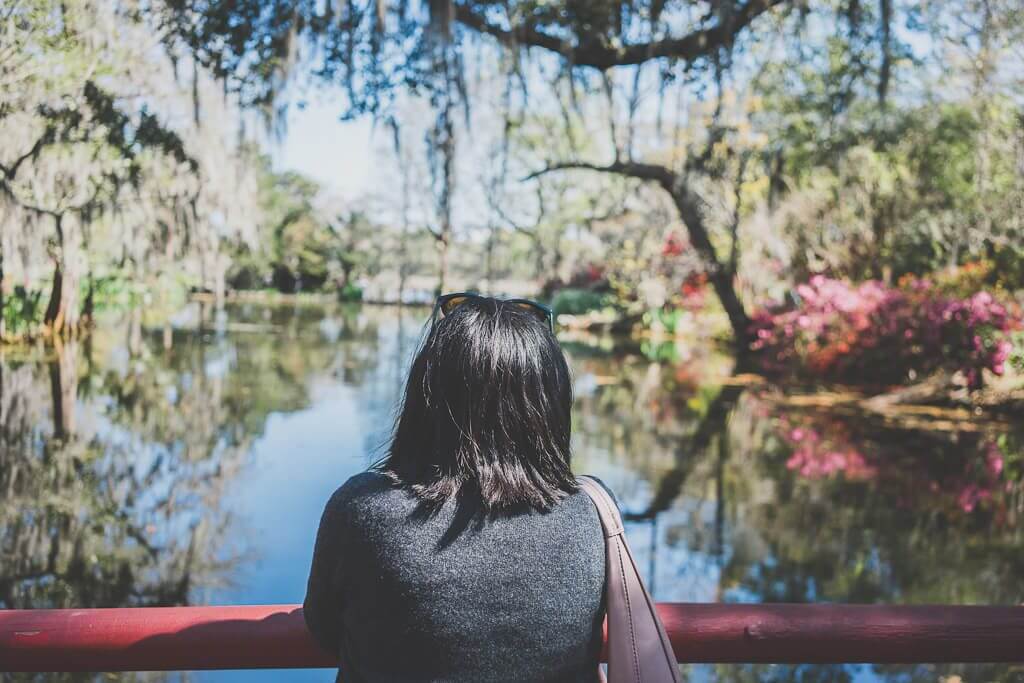


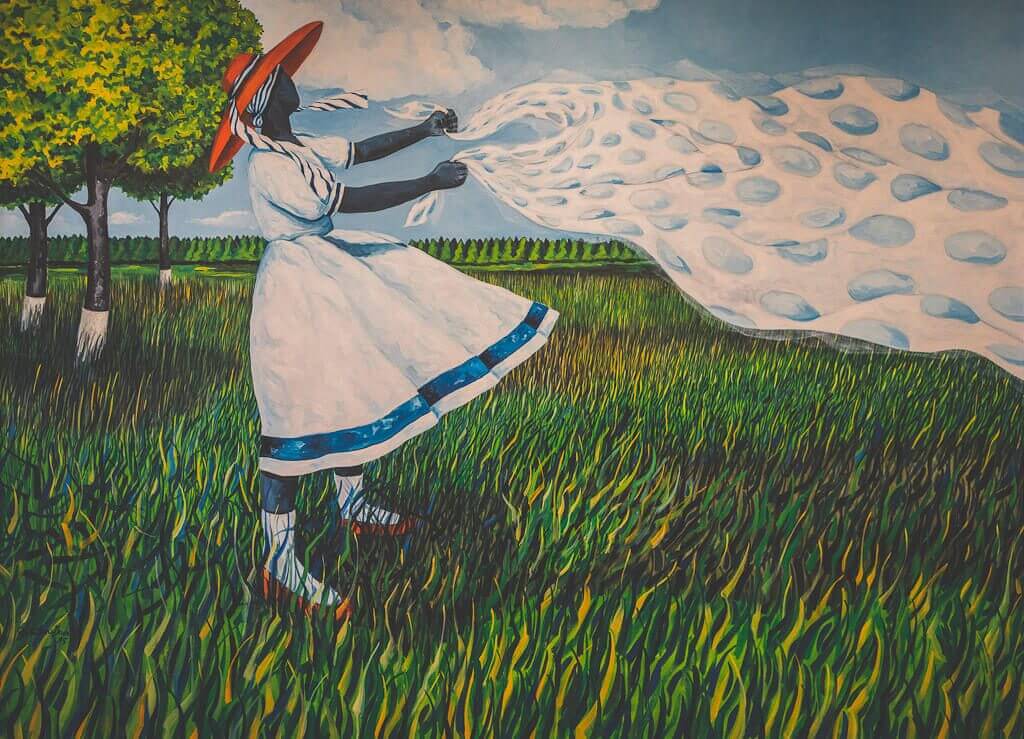
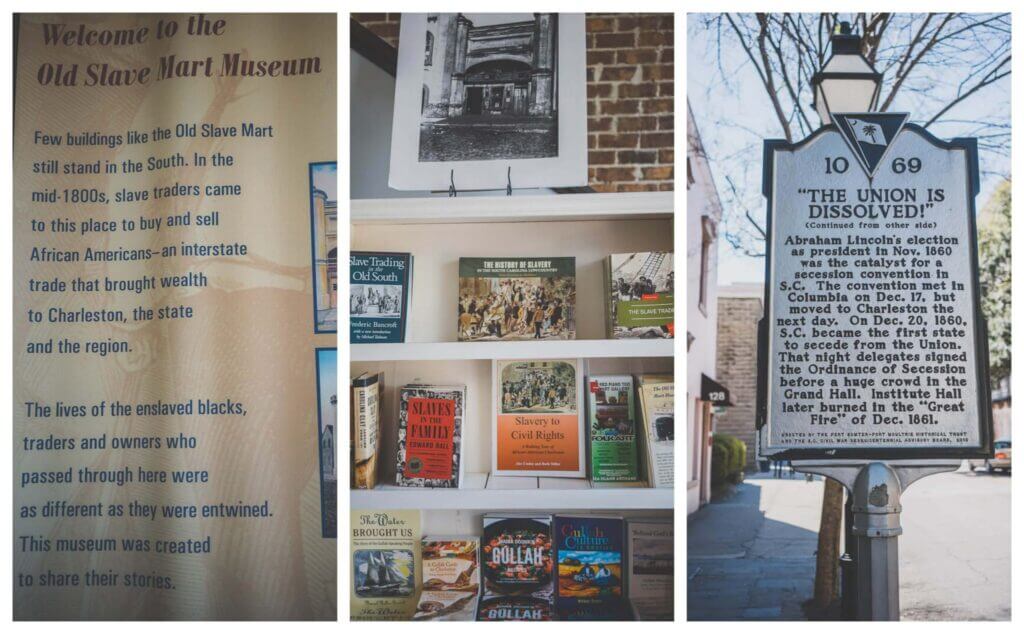
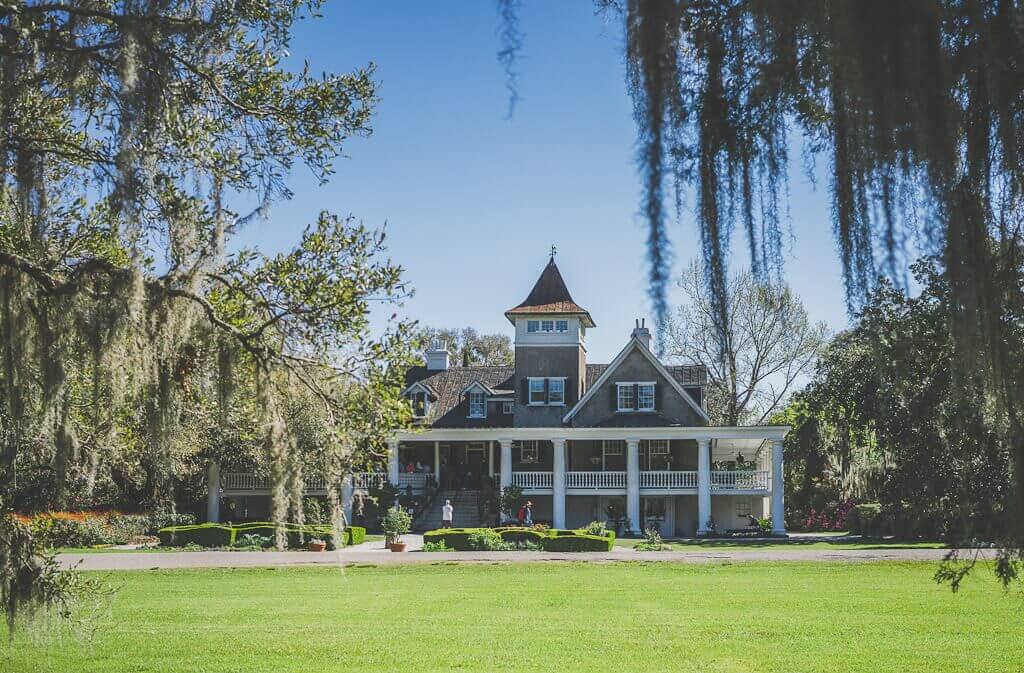

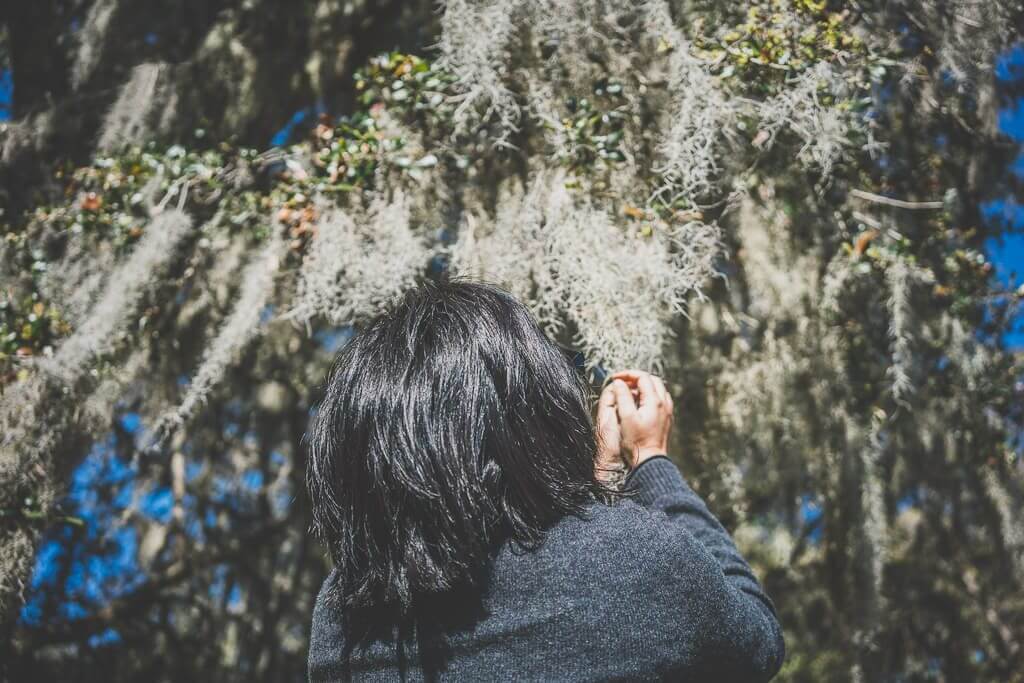
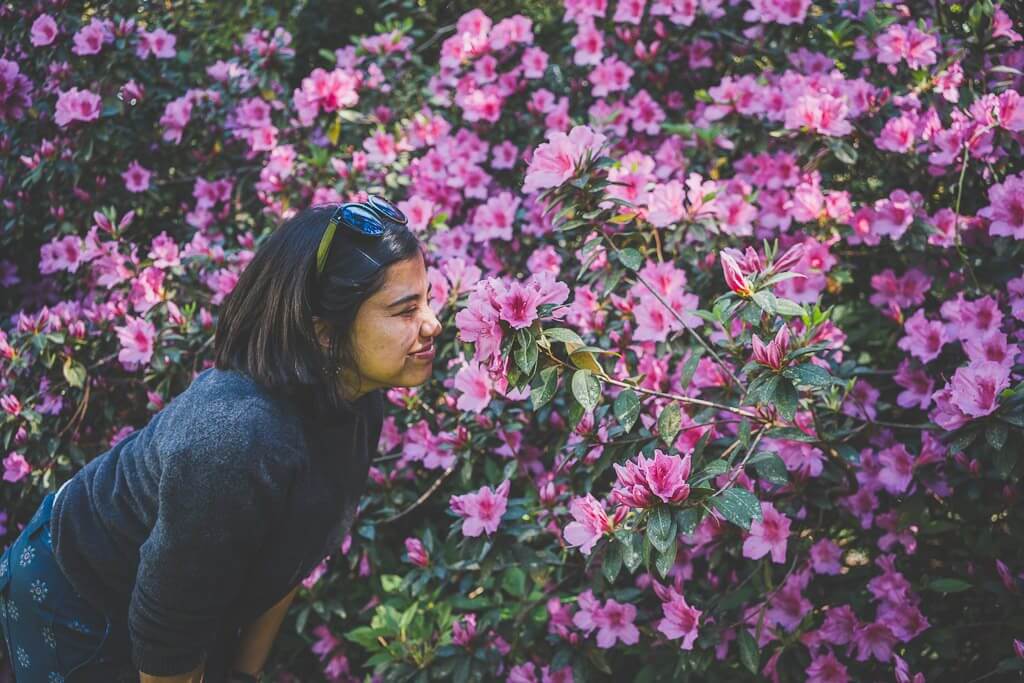

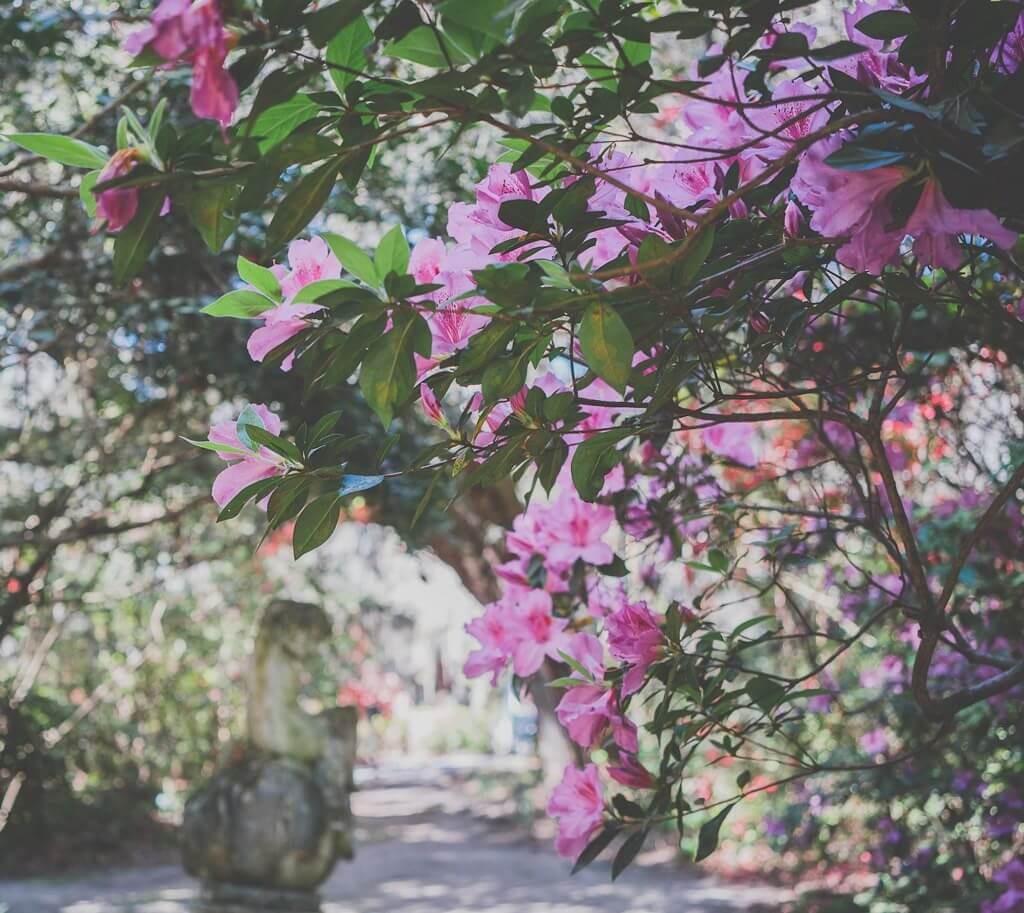
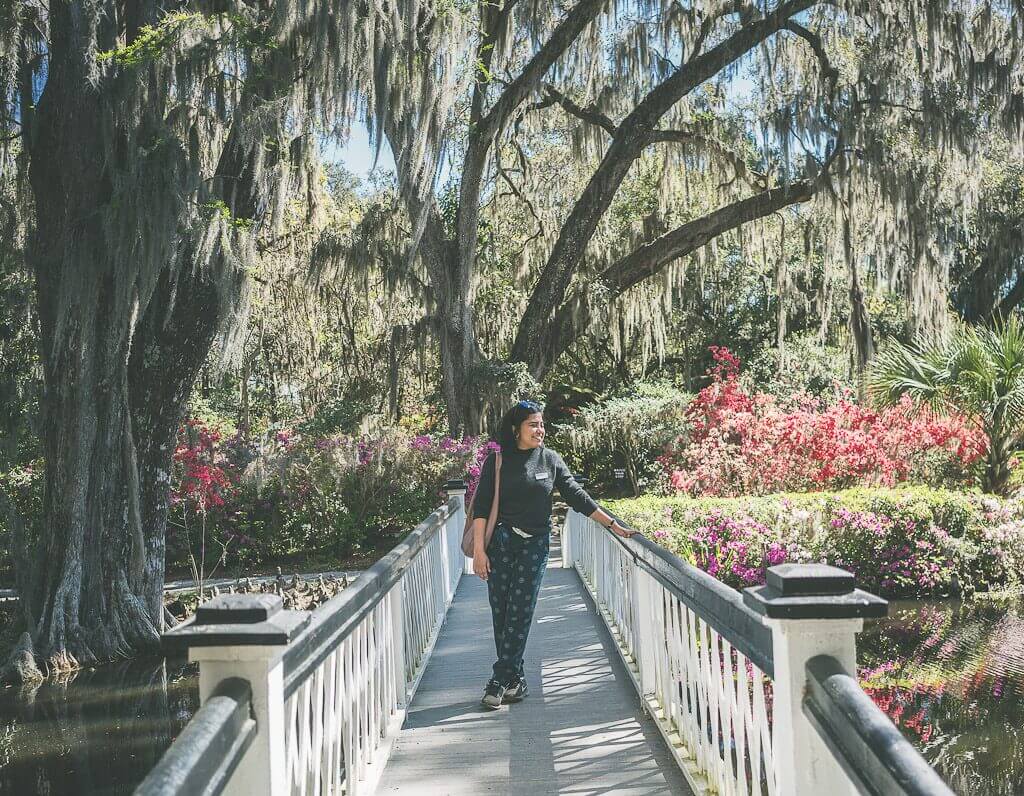




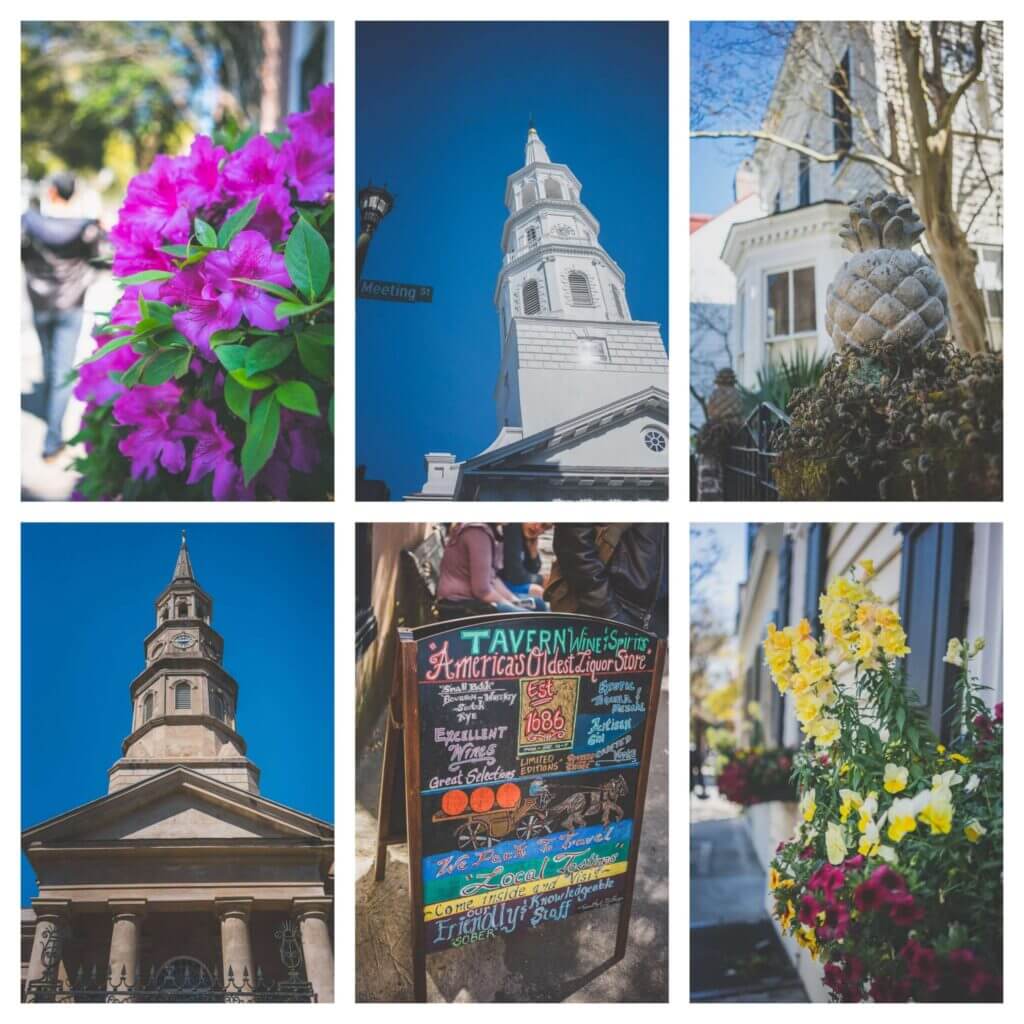






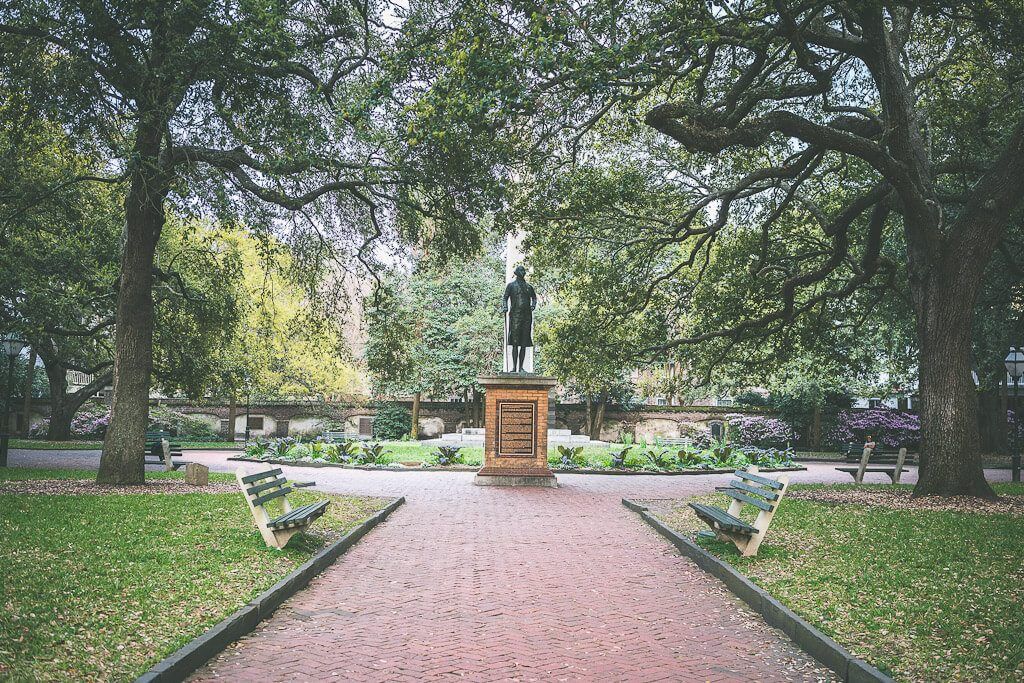
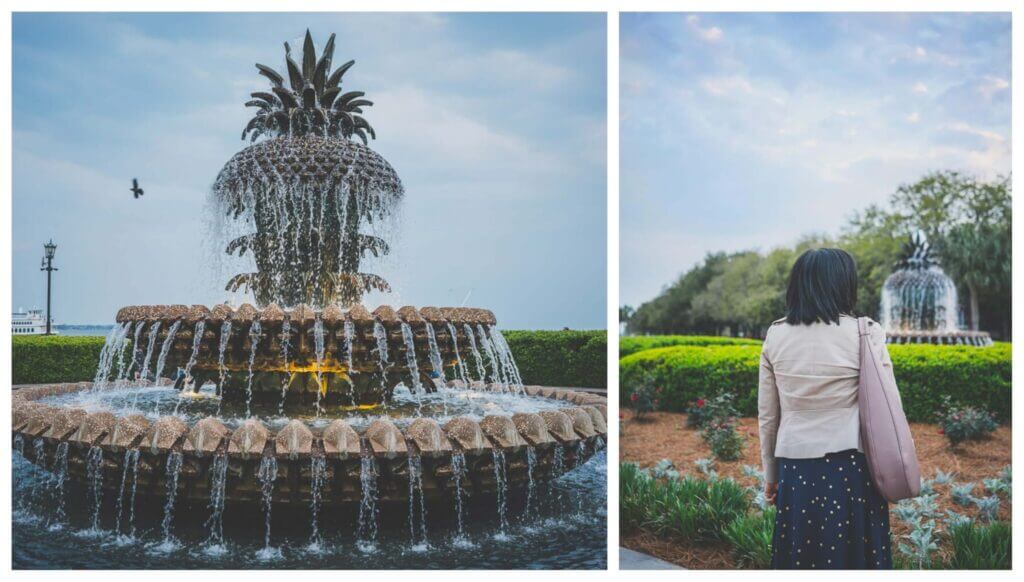
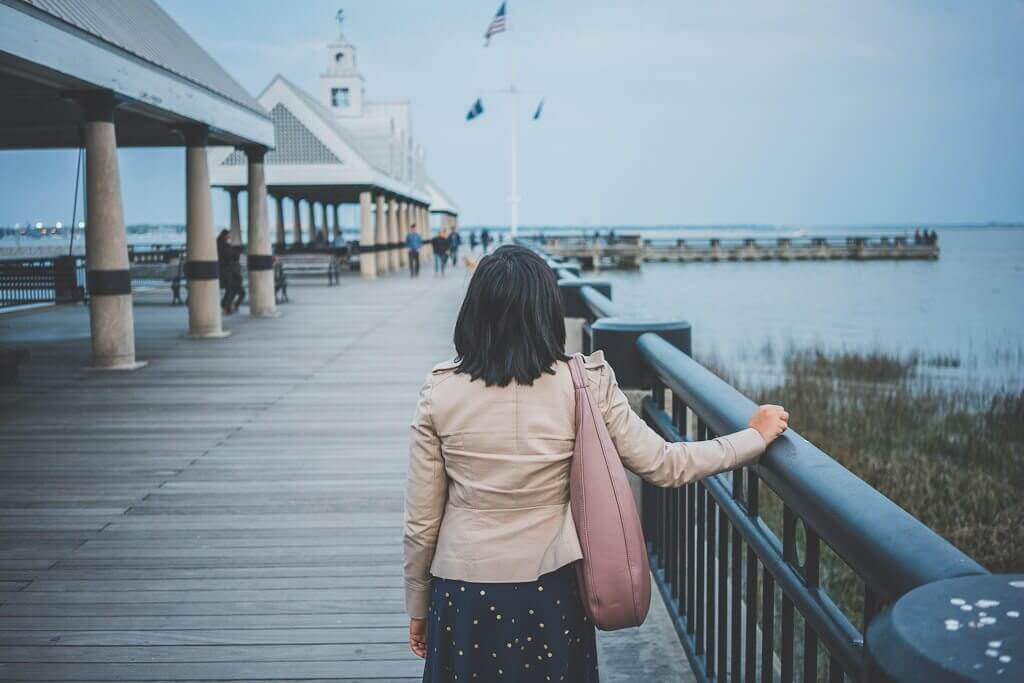
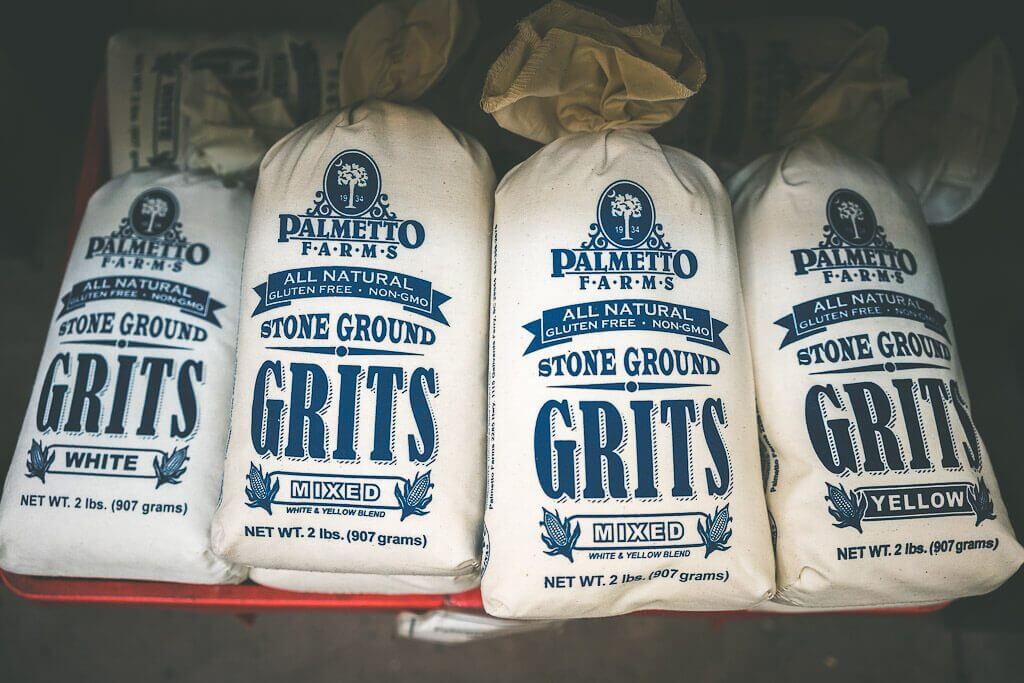
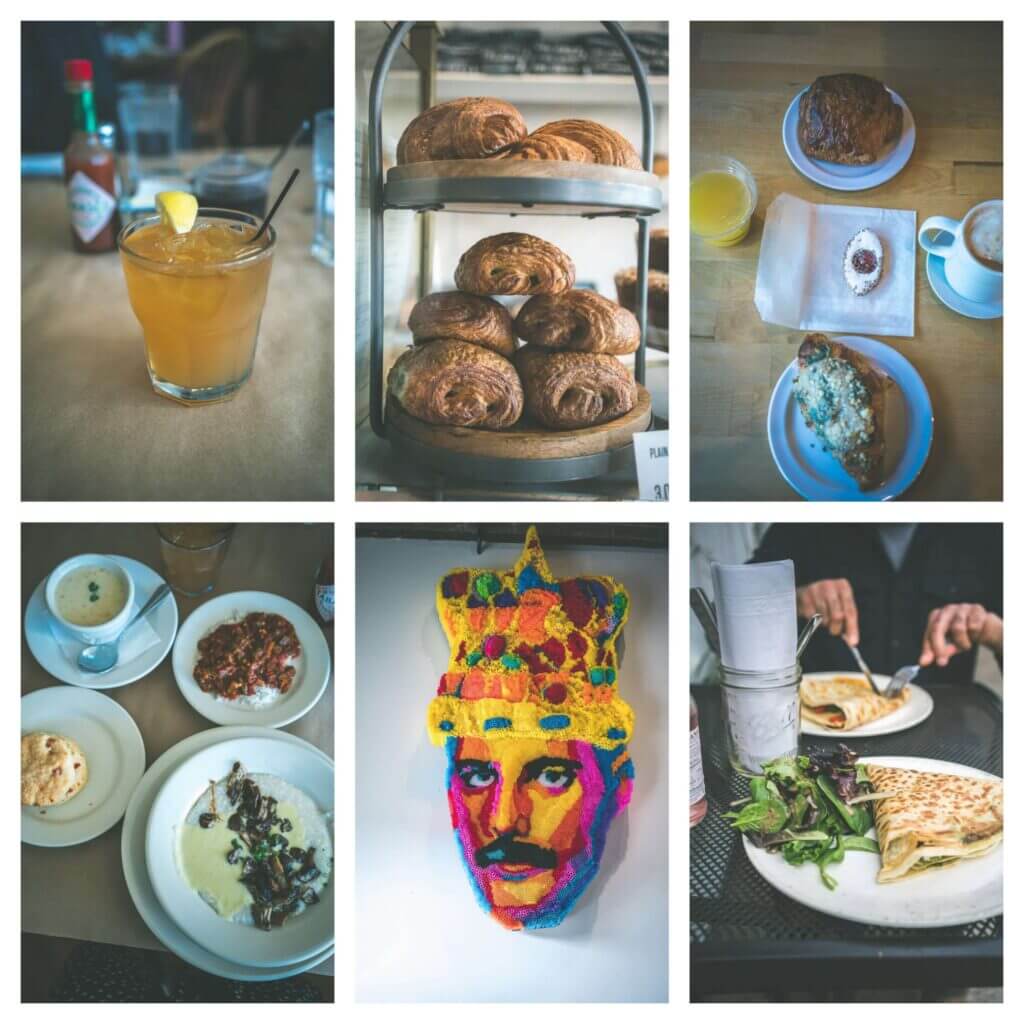

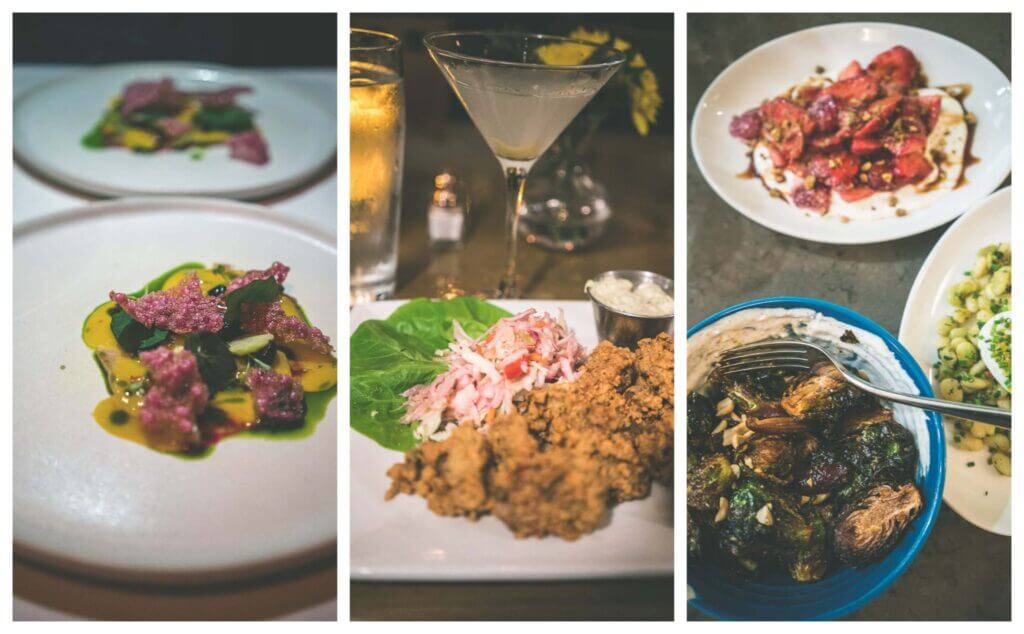



Loved this guide to Charleston. It’s so important to know the stories behind a place, even if they make us uncomfortable. Can’t wait to explore the city one day.
Perfect timing for me as I’m headed to Charleston next month. Great round up of information. Can’t wait to eat and and enjoy this beautiful place.
I love Charleston SC. Thanks for the history!
I could spend days in Charleston! Glad you checked out Xiao Bao – it’s such a cool spot.
The photos in this post are just amazing! Adding Charleston to my USA bucket list after reading this post!
I’m all about that low country cuisine! I haven’t been to Charleston since high school. It looks really charming and love all the history. I’m due for a trip there!!!
I have always wanted to visit Charleston, but I agree, knowing the history and not glossing over it is so important. Thanks for the reminder!
I love Charleston! What an incredibly comprehensive list! I would love to have a biscuit from the market right now.
Loved your guide! Heading there soon and am really looking forward to exploring (and all of the pastels!) Thanks for such a great overview!
Great guide, thank you!